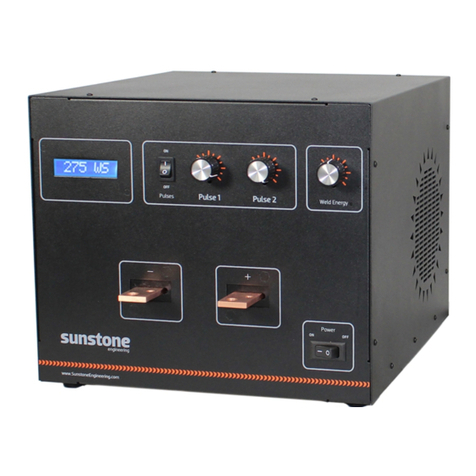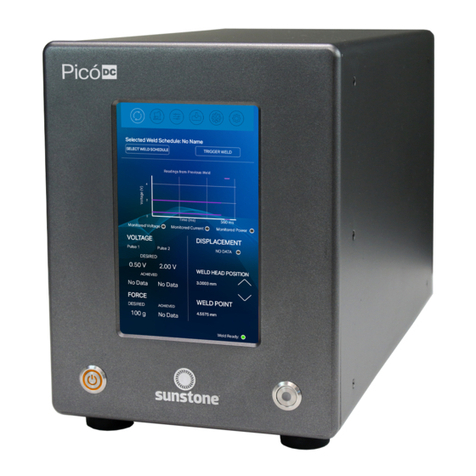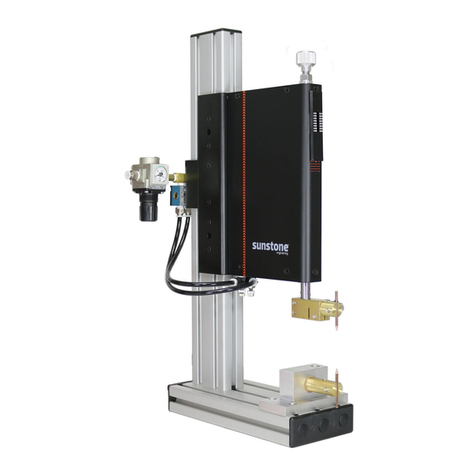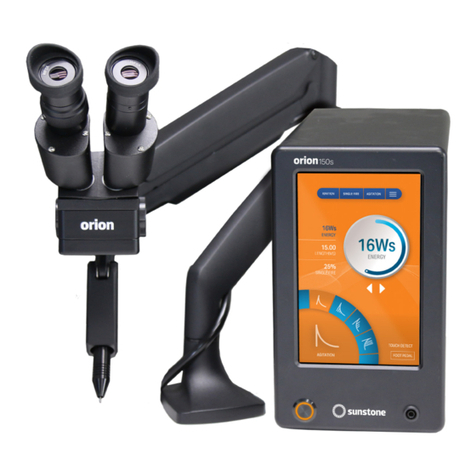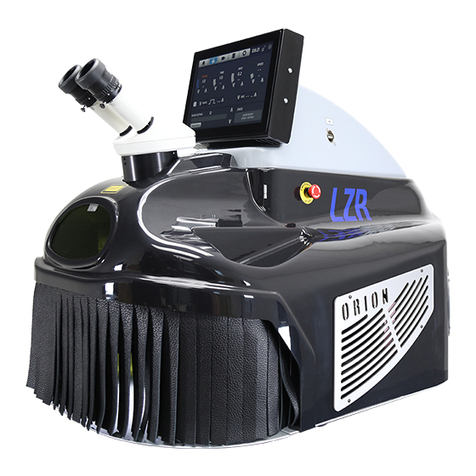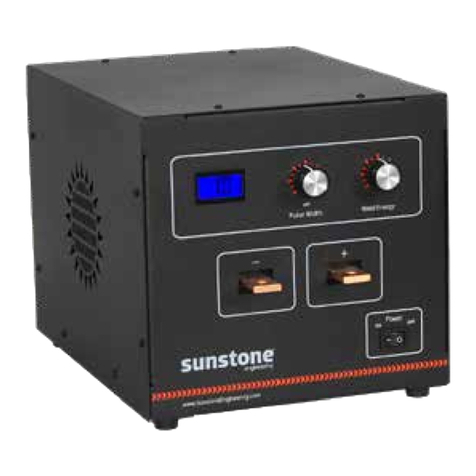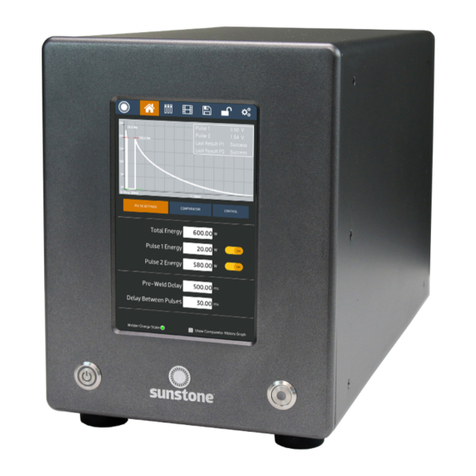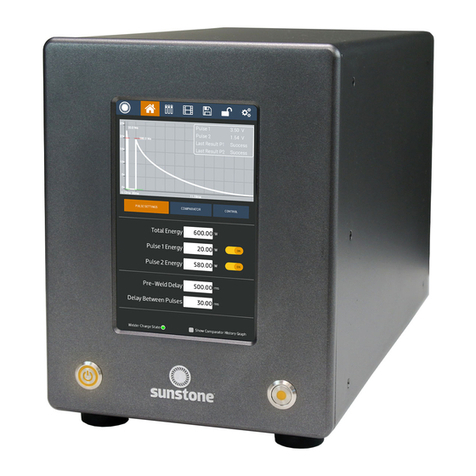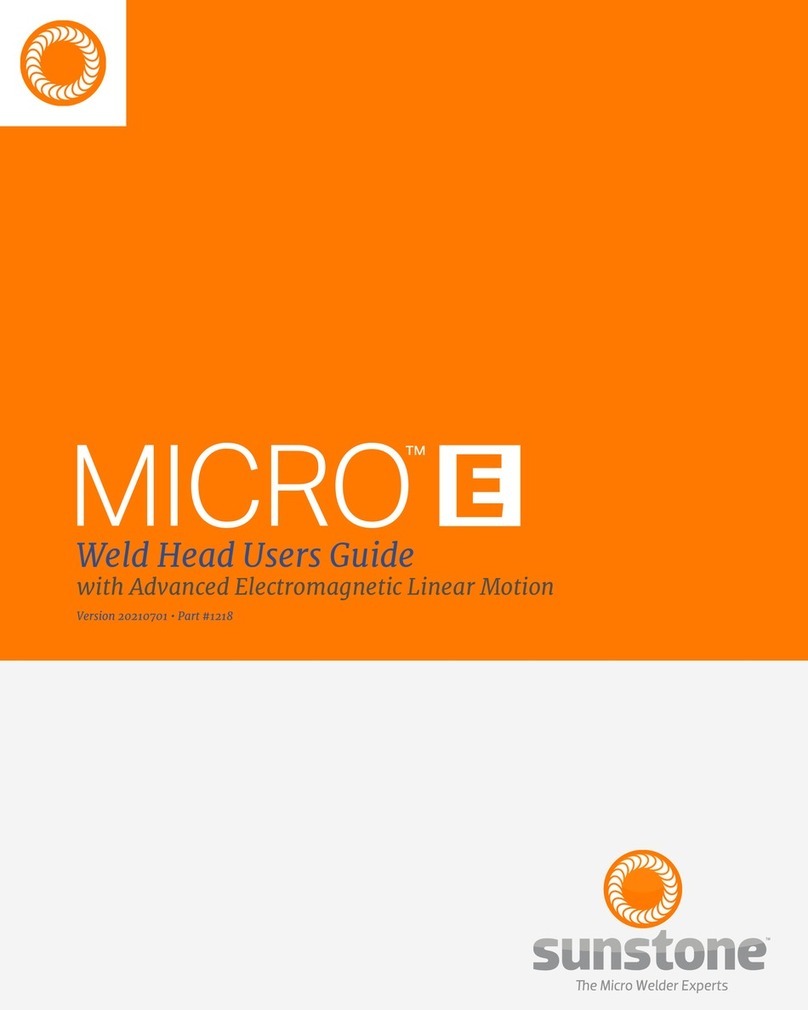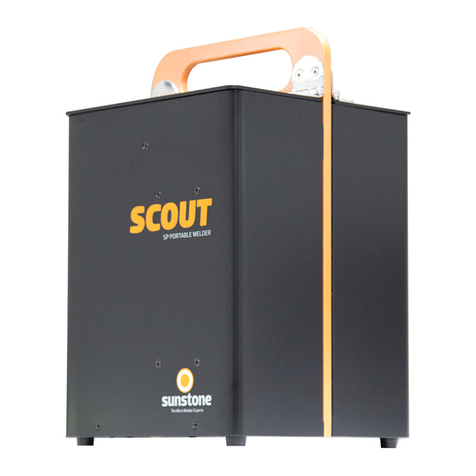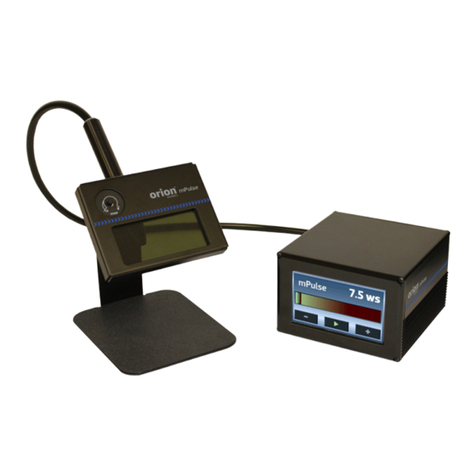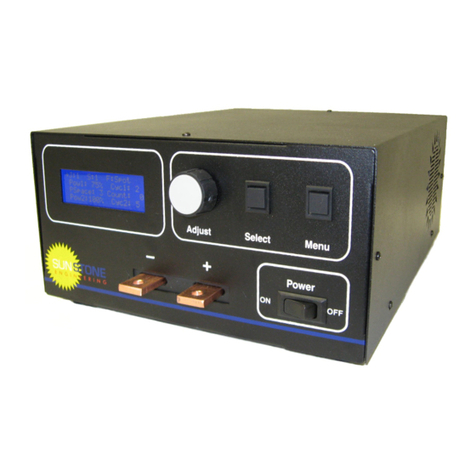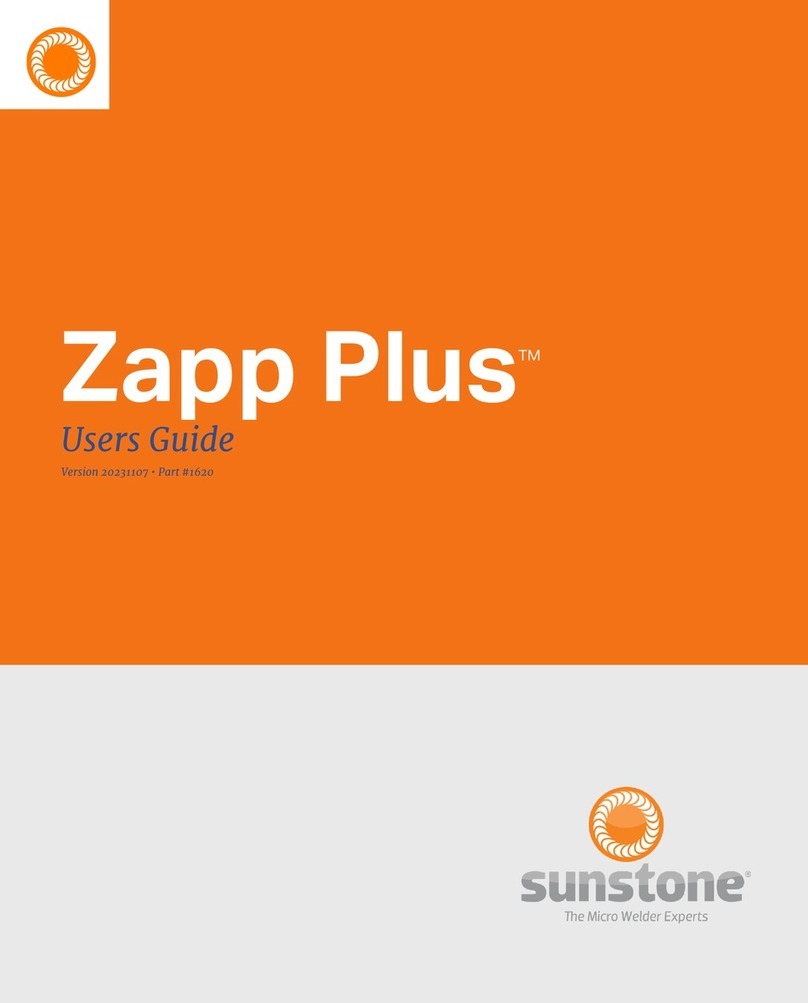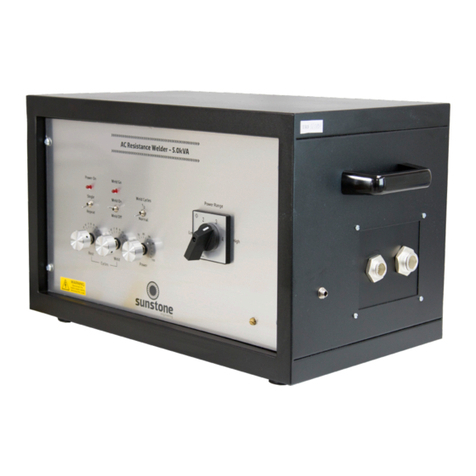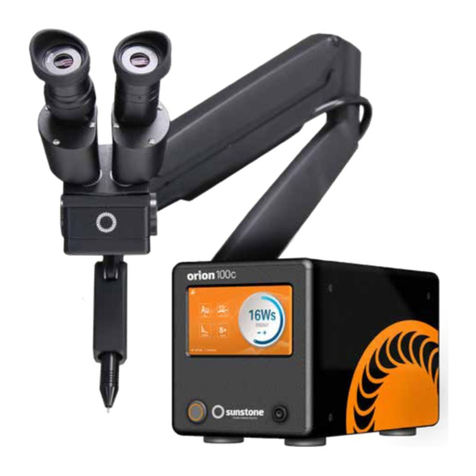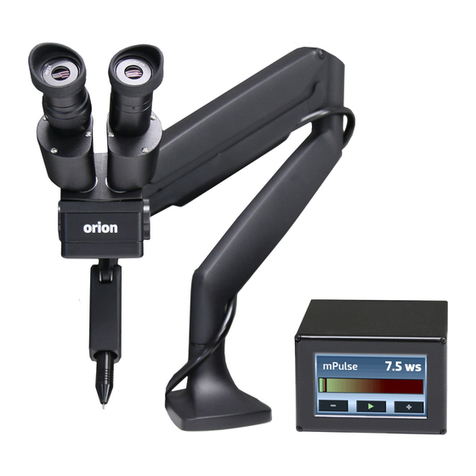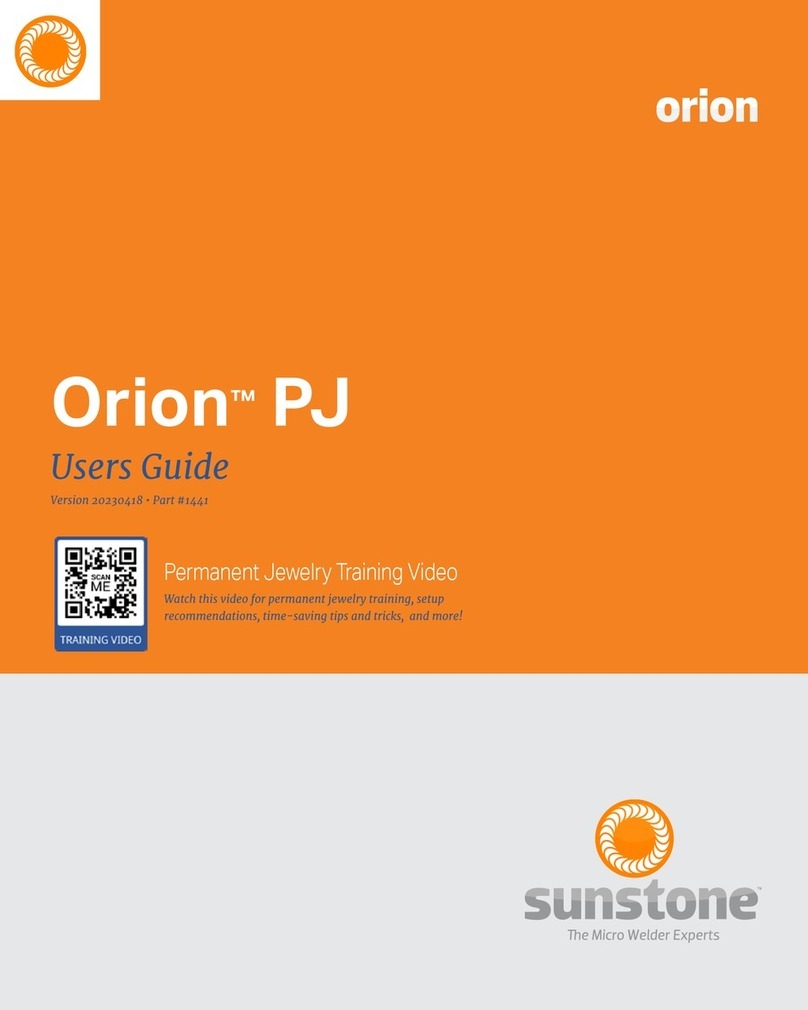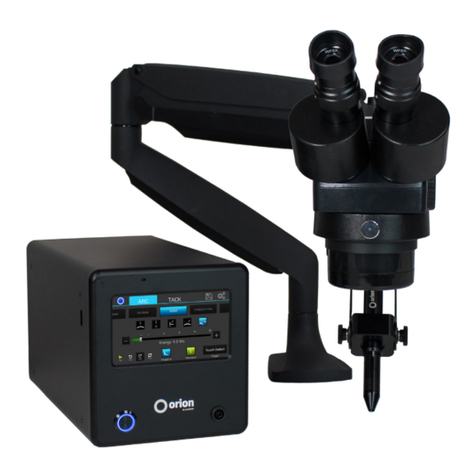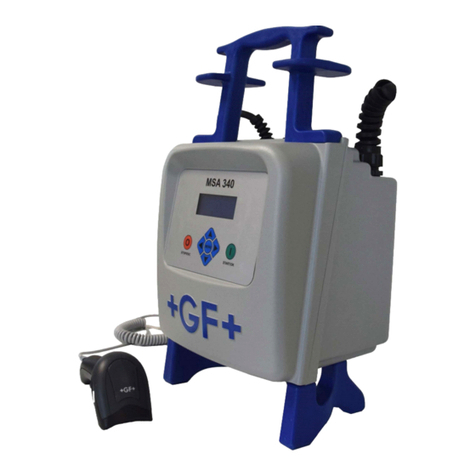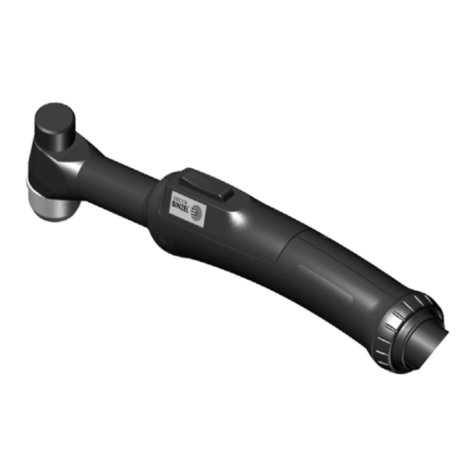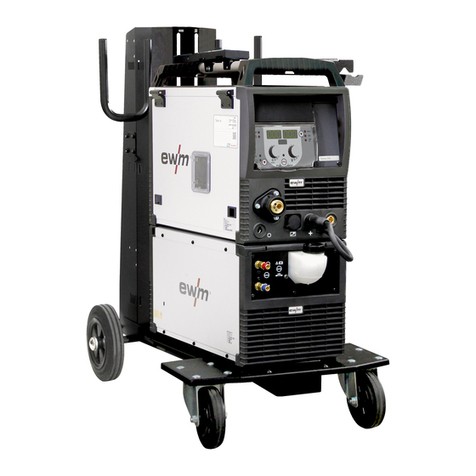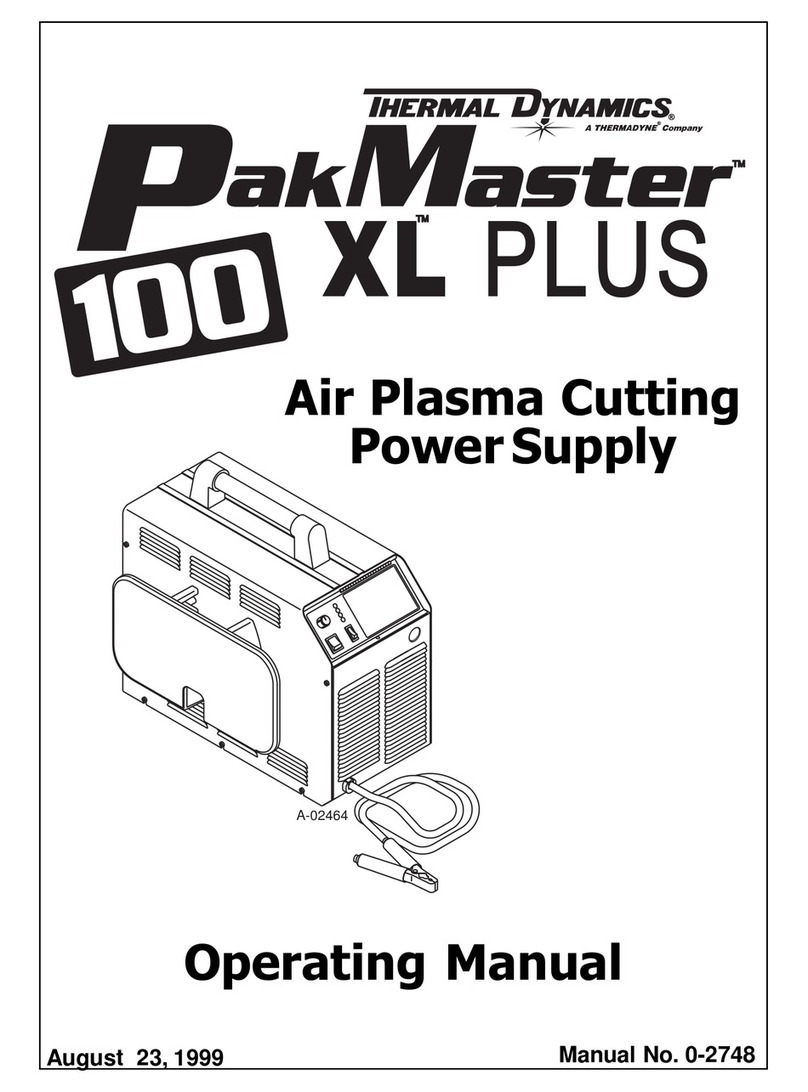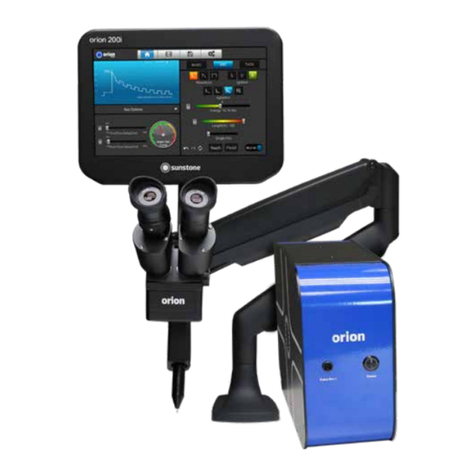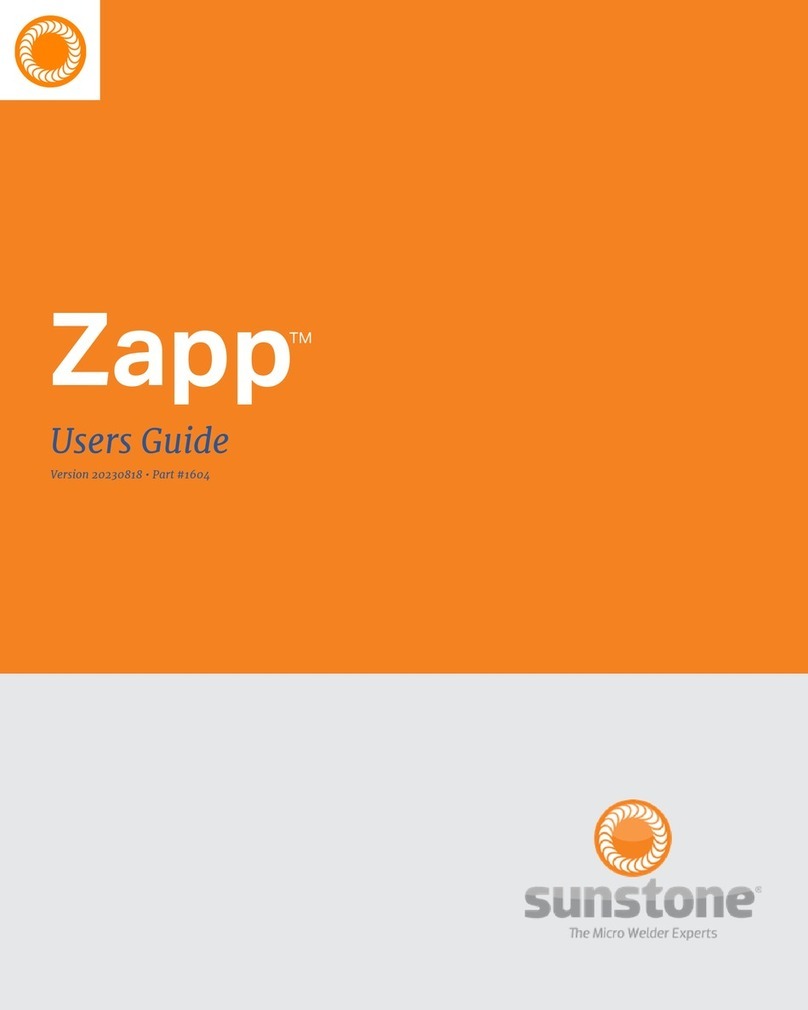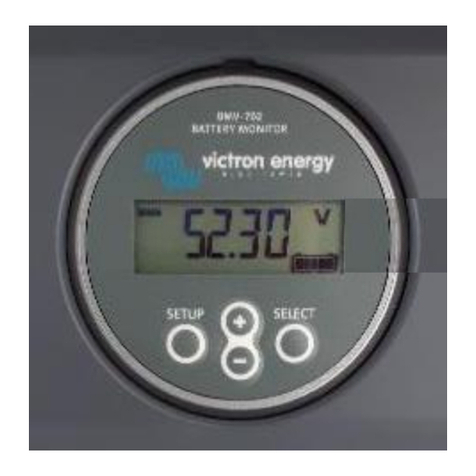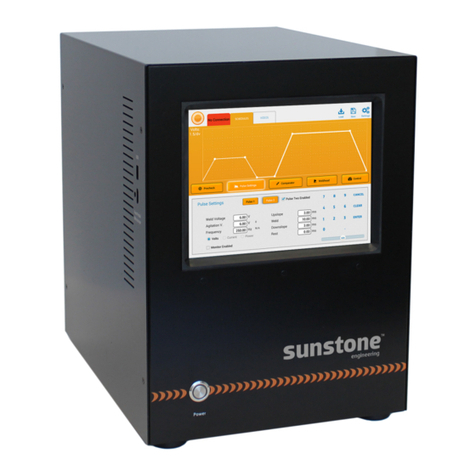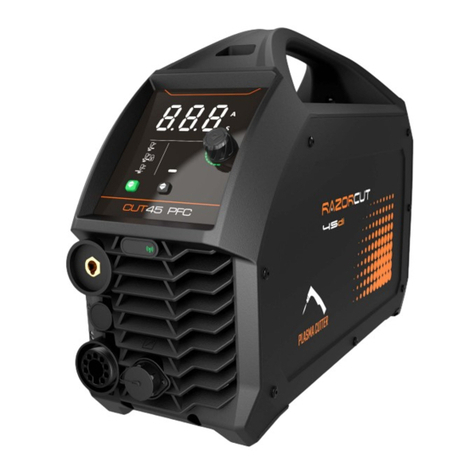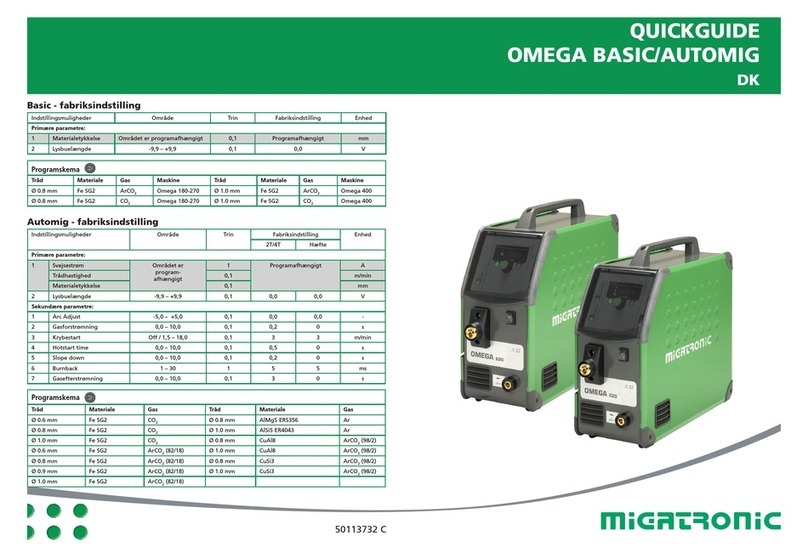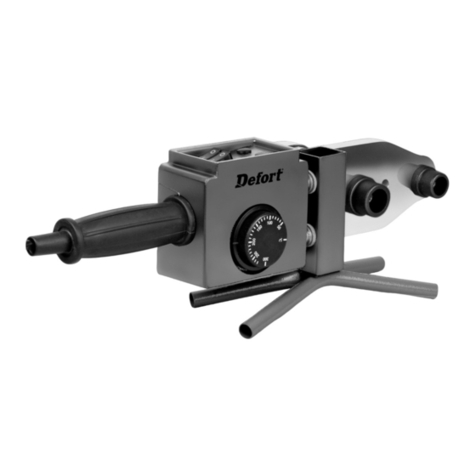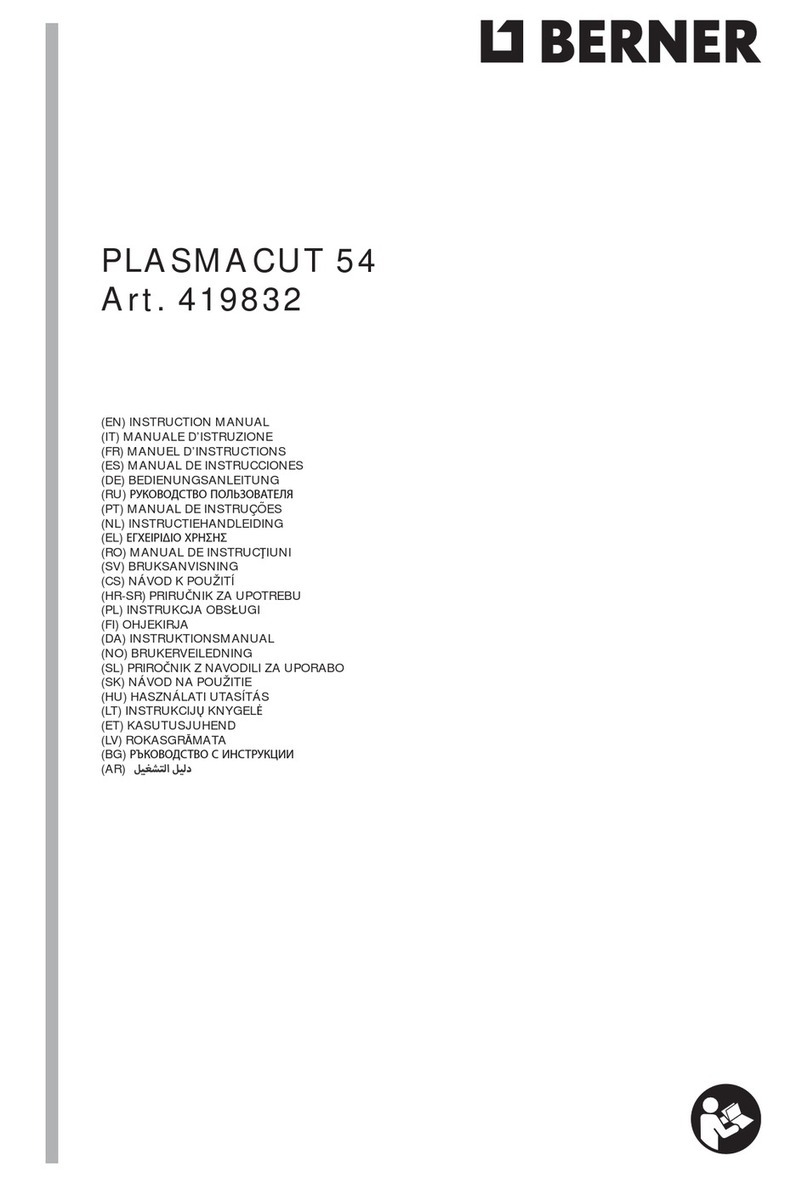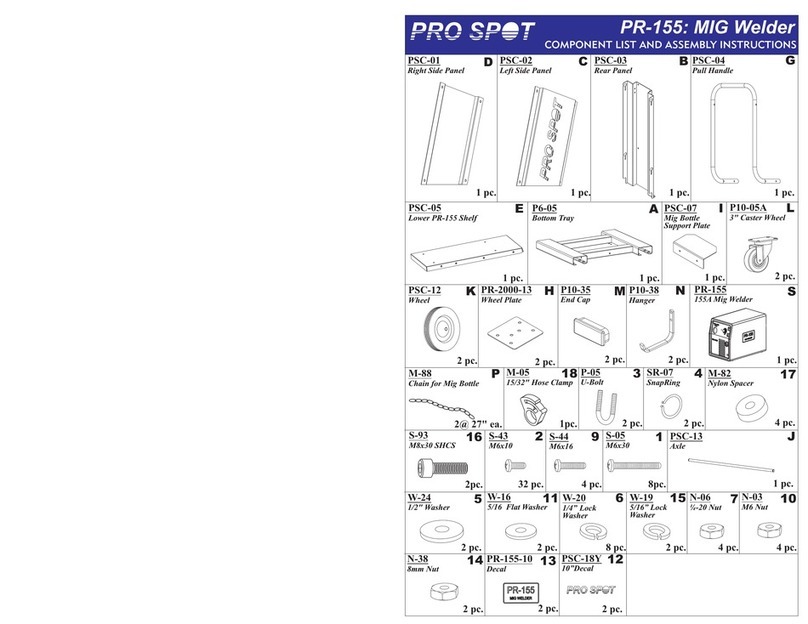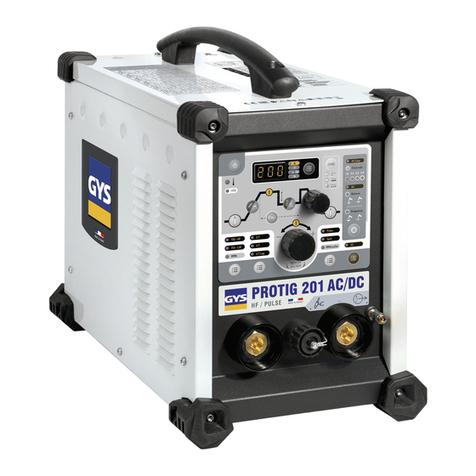
9OrionWelders.com
When To Sharpen e Electrode
*Refer to Chapter 3 of the Orion Workbook for more information on electrodes.
e majority of applications are best welded using a sharpened electrode tip. A sharp tip improves arc initiation and helps
focus the arc properly. It is recommended that the user pay close attention to the electrode condition. An electrode that
appears to be dark colored or covered with material from previous welds can lead to inconsistent welding and poor ignition
of the weld arc. When this occurs, simply sharpen the electrode with the included diamond disk. e diamond disk can be
attached to a flex shaft or Dremel tool. Follow these steps for sharpening the electrode:
• Completely remove the electrode from the stylus.
• Pinch the electrode between the thumb and index and/or middle
finger with the shaft going perpendicular to the fingers.
• Power on the Dremel or flex shaft then hold it with the opposite hand.
• Place the electrode tip on the diamond disc in such a way that the
grit of the disk is moving parallel with the electrode shaft and moving
towards the tip. View image on the right for help with placement.
• This will affect the quality of the weld if not done as explained above.
• Set the electrode on the diamond disk at a 10-degree angle and begin to spin
the electrode with the thumb and middle finger. *A helpful way to get a sharp
electrode is to push down on the electrode with your index finger while twisting
the electrode with the thumb and middle finger.
• Once the electrode is sharp and clean, turn the Dremel off and insert the elec-
trode back into the stylus as explained above.
*As a general rule of thumb we recommend a freshly sharpened electrode anytime a
new work-piece is being welded.
When To Flatten/ Blunt e Electrode
• When working with silver, copper, and other highly conductive metals in energy levels above 20ws, it is recommended
to blunt the electrode instead of sharpening it.
• Completely remove the electrode from the stylus.
• Pinch the electrode between the thumb and middle finger with the point facing inward.
• Turn the Dremel or flex shaft on then hold it with the opposite hand. *Place the electrode tip in the diamond disc in such
a way that the grit of the disk is moving parallel with the electrode shaft and moving towards the tip.
• This will affect the quality of the weld if not done as explained above.
• Set the electrode on the diamond disk at a 10-degree angle and begin to spin the electrode with the thumb and middle
finger. *A helpful way to get a sharp electrode is to push down on the electrode with your index finger while twisting the
electrode with the thumb and middle finger.
• Once the electrode is sharp and clean, turn the electrode to a 90-de-
gree angle and push it against the Dremel in order to place a flat/blunt
tip on the electrode.
• Once the electrode has a flat/blunt tip, turn the Dremel off and insert
the electrode back into the stylus as explained above.
